Car crashes into Russian consulate in Australia’s Sydney
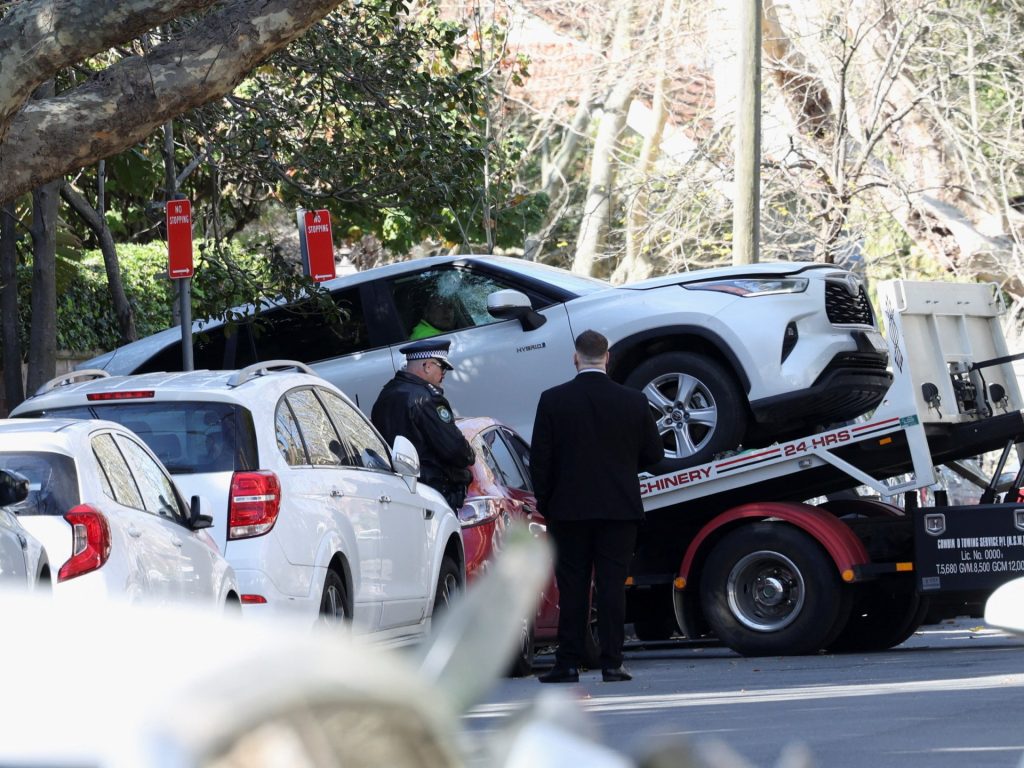
Police say a 39-year-old man has been taken into custody over the incident in Sydney’s Woollahra suburb. Published On 1 Sep 20251 Sep 2025 Australian police have arrested a 39-year-old man after he drove his car into the front gate of the Russian consulate in Sydney, according to police and local media. In a statement, the New South Wales Police Force said the crash took place on Monday morning after officers responded to reports of an “unauthorised vehicle” parked in the driveway of the consulate in the Sydney suburb of Woollahra. Officers tried to speak with the driver, but he “drove his vehicle into the gates of the property”, the statement said. A 24-year-old constable was injured on his hand during the incident, it added. Television footage from Sky News and Nine showed a car with a smashed window abandoned next to a Russian flagpole. There was no immediate comment from the Russian consulate. Adblock test (Why?)
Indonesia tightens security after deadly protests
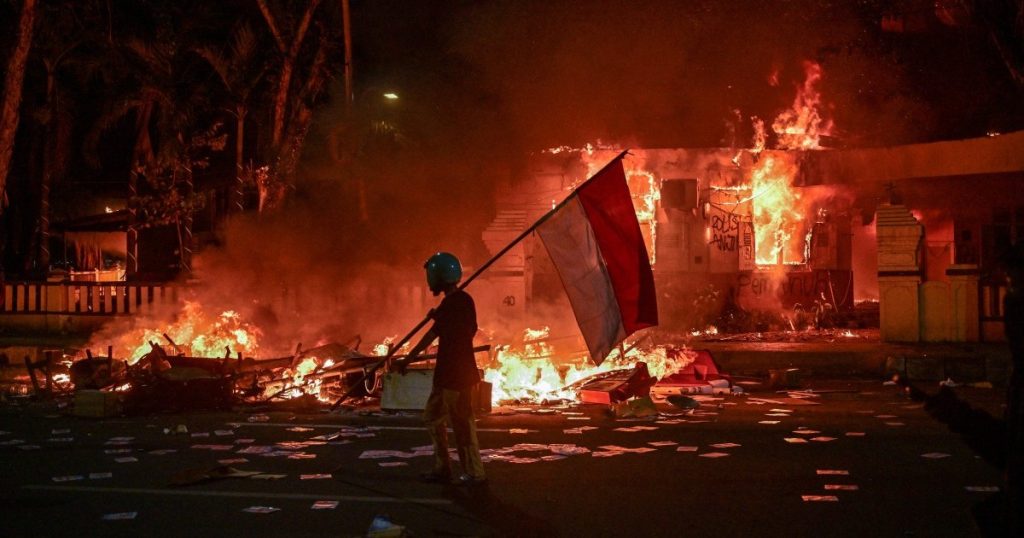
Police set up checkpoints across Jakarta in anticipation of further demonstrations. Published On 1 Sep 20251 Sep 2025 Indonesian authorities have ramped up security after six people were killed in unrest over economic hardship that escalated into violent anger against the nation’s police force. The deadly protests, which began last week over financial perks for lawmakers, have forced President Prabowo Subianto to make a U-turn over the measures. Demonstrations had begun peacefully, but turned violent against the nation’s elite paramilitary police unit after footage showed one of its teams running over 21-year-old delivery driver Affan Kurniawan late on Thursday. Protests have since spread from the capital, Jakarta, to other major cities, including Yogyakarta, Bandung, Semarang and Surabaya in Java, and Medan in North Sumatra province, in the worst unrest since Prabowo took power. More gatherings of students and protesters were planned in several locations around Indonesia’s vast archipelago on Monday. Police set up checkpoints across the capital, Jakarta, on Monday, and a police spokesman told broadcaster Kompas TV that officers were also patrolling the city to “protect” citizens and give a sense of security. Police had deployed a convoy of armoured cars and motorbikes to parliament late on Sunday, in a show of force as they attempted to warn off protesters. The crisis has forced Prabowo to cancel a planned trip to China this week for a military parade commemorating the end of World War II. His close ally, Minister of Defence Sjafrie Sjamsoeddin, warned Sunday that military and police would take “firm action” against “rioters and looters”, after the Minister of Finance’s house was pillaged. Advertisement At least three people were killed after a fire on Friday started by protesters at a council building in the eastern city of Makassar. Another victim died in Makassar on Friday after he was beaten by a mob on suspicion that he was an intelligence officer, local disaster agency official Muhammad Fadli Tahar told AFP on Sunday. In Yogyakarta, the Amikom Yogyakarta University confirmed the death of its student, Rheza Sendy Pratama, in protests, but the circumstances around his death remain unclear. In anticipation of further unrest, TikTok on Saturday temporarily suspended its live feature for “a few days” in Indonesia, where it has more than 100 million users. Adblock test (Why?)
Flotilla activists speak out before setting sail from Barcelona to Gaza
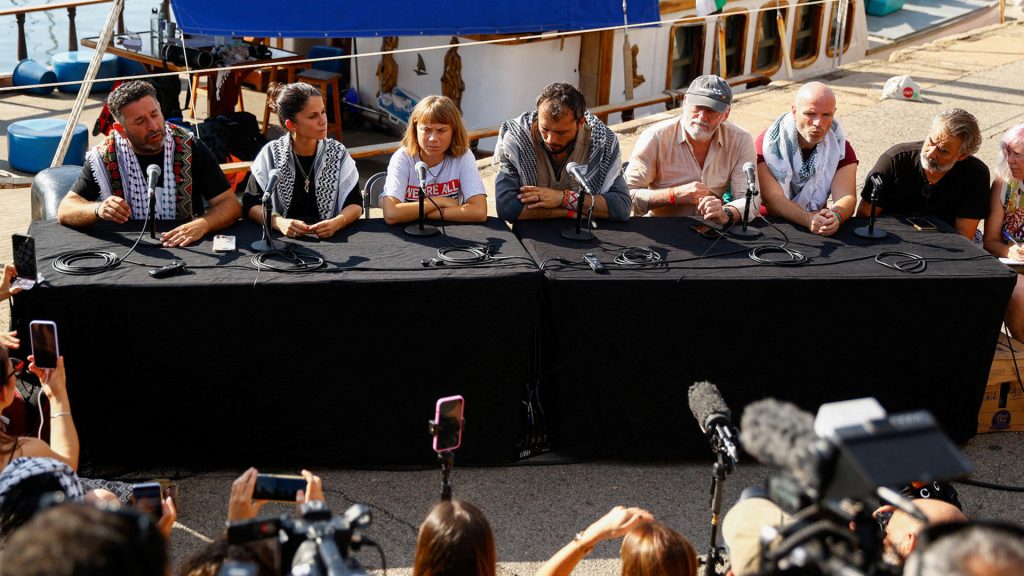
Activists addressed the media as the Global Sumud Flotilla prepared to depart for Gaza from Barcelona, aiming to deliver urgent food and supplies to the enclave. Greta Thunberg said dozens of boats have joined the effort to break Israel’s blockade and ‘deliberate denial of basic survival needs’. Published On 31 Aug 202531 Aug 2025 Adblock test (Why?)
Pro-Palestine activists shine spotlight on Gaza at Venice Film Festival
[unable to retrieve full-text content] Thousands of pro-Palestine demonstrators are making their voices heard during the Venice Film Festival.
Pakistan’s Punjab evacuates half a million people stranded by floods
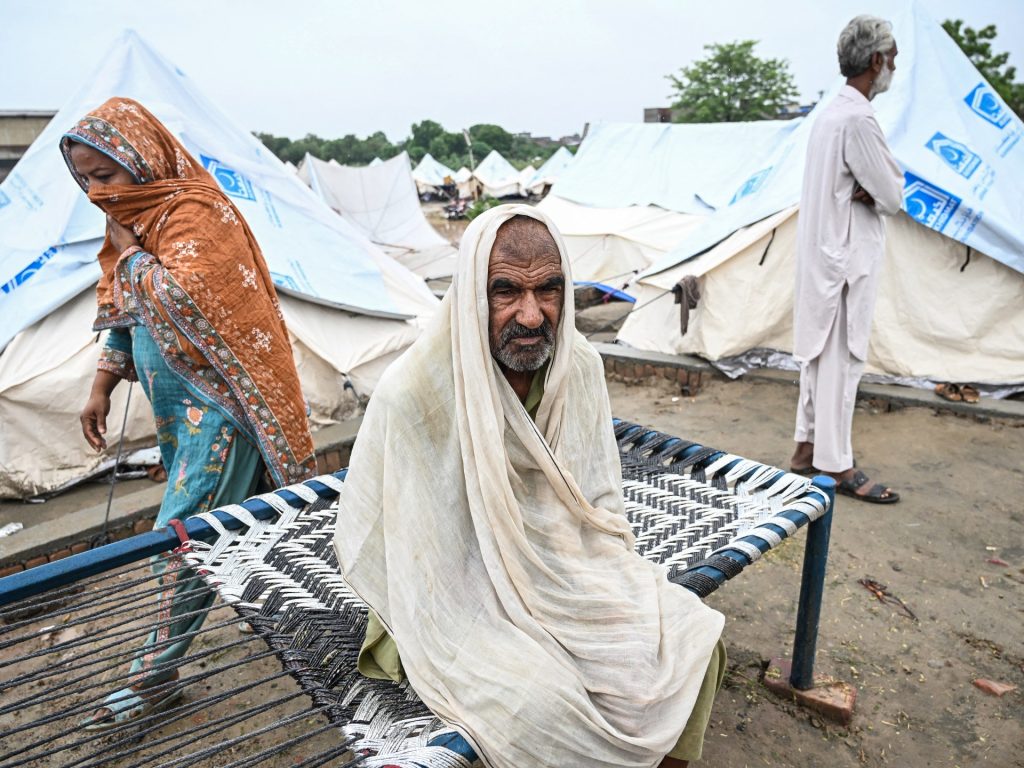
Published On 31 Aug 202531 Aug 2025 Nearly half a million people have been displaced by flooding in eastern Pakistan after days of heavy rain swelled rivers, relief officials said, as they carried out a massive rescue operation. Three transboundary rivers that cut through Punjab province, which borders India, have swollen to exceptionally high levels, affecting more than 2,300 villages. Nabeel Javed, the head of the Punjab government’s relief services, said on Saturday that 481,000 people stranded by the floods had been evacuated, along with 405,000 livestock. Overall, more than 1.5 million people have been affected by the flooding, including in Lahore, the provincial capital and the country’s second-largest city. “This is the biggest rescue operation in Punjab’s history,” Irfan Ali Khan, the head of the province’s disaster management agency, said at a news conference. He said more than 800 boats and some 1,300 rescue personnel were involved in evacuating families from affected areas, mostly located in rural areas near the banks of the three rivers. The latest spell of monsoon flooding since the start of the week has killed 30 people, he said, with hundreds left dead throughout the heavier-than-usual season that began in June. “No human life is being left unattended. All kinds of rescue efforts are continuing,” Khan said. More than 500 relief camps have been set up to provide shelter to families and their livestock. In the impoverished town of Shahdara, on the outskirts of Lahore, dozens of families were gathered in a school after fleeing the rising water in their homes. Advertisement In mid-August, more than 400 Pakistanis were killed in a matter of days by landslides caused by torrential rain on the other side of the country, in Khyber Pakhtunkhwa, close to Afghanistan and the only province held by the opposition to the federal authorities. In 2022, unprecedented monsoon floods submerged a third of Pakistan, with the southern province of Sindh being the worst-affected area. Adblock test (Why?)
What’s behind widespread unrest in Indonesia?
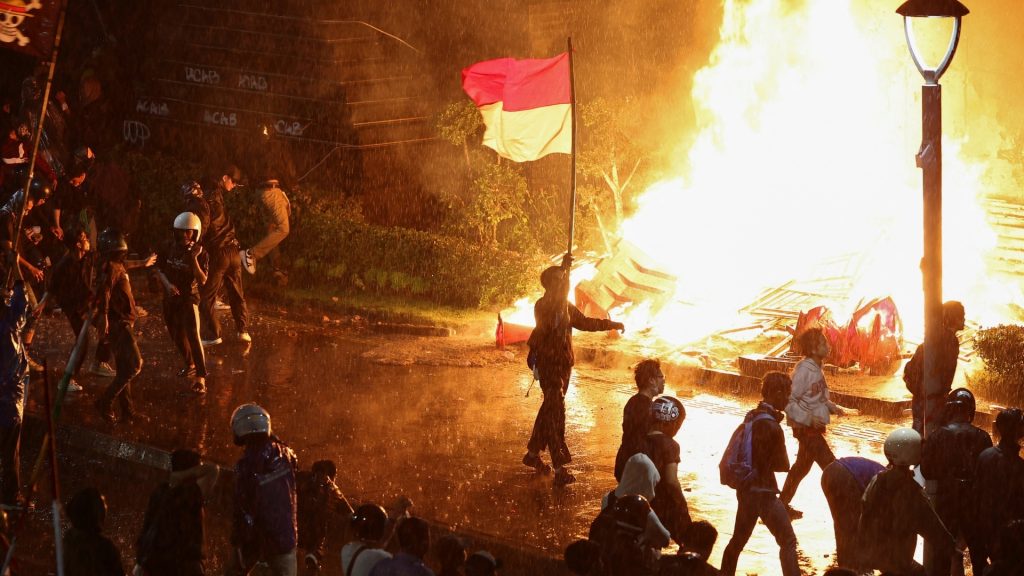
Violence spreads after police vehicle kills delivery driver on motorcycle. Violence has broken out on the streets of Indonesia after a motorcycle taxi driver was run over and killed by police. The president has apologised and appealed for calm, but protests continue. What’s driving the anger, and how will the government respond? Presenter: Adrian Finighan Guests: Abigail Limuria – Cofounder of What Is Up Indonesia?, a digital media platform that unpacks Indonesian sociopolitics Vedi Hadiz – Professor of Asian studies at the University of Melbourne Wirya Adiwena – Deputy director of Amnesty International Indonesia Published On 30 Aug 202530 Aug 2025 Adblock test (Why?)
‘Right to know’: Advocates renew calls for justice for Syria’s disappeared
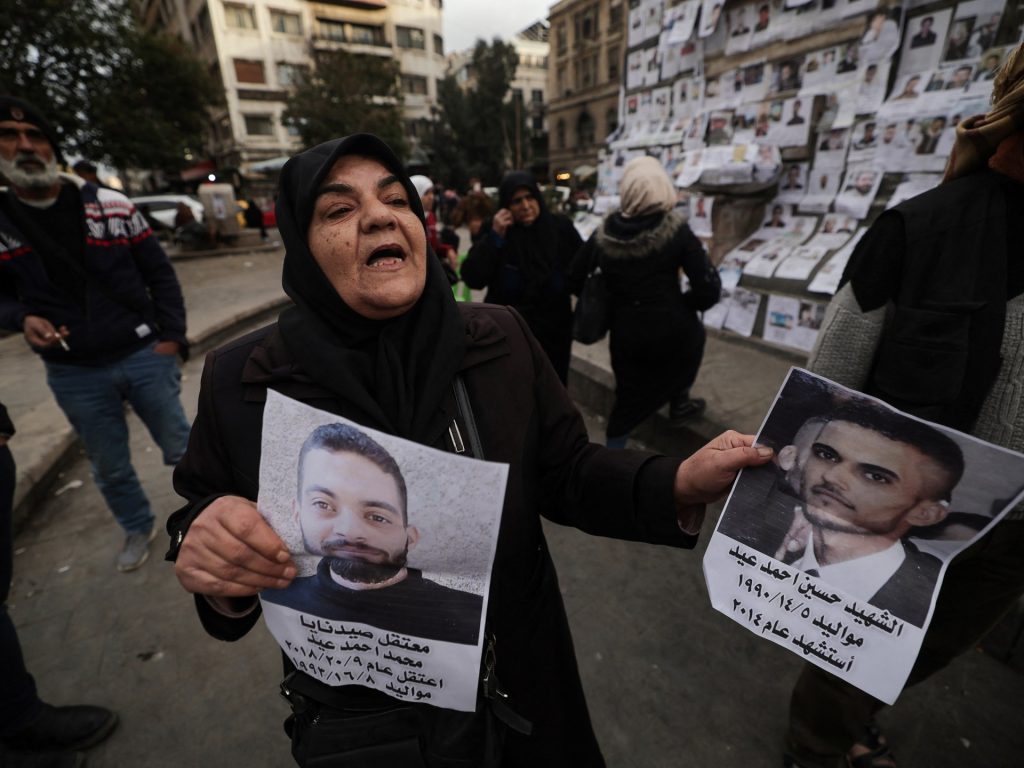
Syria is marking its first International Day of the Victims of Enforced Disappearances since the fall of former President Bashar al-Assad, as the country grapples with lingering questions over the fate of the many thousands who disappeared during the country’s civil war. In a report released on Saturday to coincide with the annual commemoration, the Syrian Network for Human Rights (SNHR) said this year holds “particular significance” as it received a major increase in the number of cases since al-Assad was toppled in December. Desperate families flocked to former detention centres, prisons, morgues, and mass grave sites to try to find their missing relatives after al-Assad’s removal, and investigators gained unprecedented access to government documents, witness accounts and human remains. “A limited number of detainees were released alive, while the fate of tens of thousands remained unknown, rendering them forcibly disappeared,” SNHR said on Saturday. “This revealed a major tragedy that affected Syrian society as a whole.” The rights group said in its report that at least 177,057 people, including 4,536 children and 8,984 women, were forcibly disappeared in Syria between March 2011 and August 2025. It estimated that the former government was responsible for more than 90 percent of those cases. “Al-Assad’s regime has systematically adopted a policy of enforced disappearance to terrorize and collectively punish society, targeting dissidents and civilians from various regions and affiliations,” SNHR said. This year’s International Day of the Victims of Enforced Disappearances comes just months after a new Syrian government was established under the leadership of interim President Ahmed al-Sharaa. Advertisement Al-Sharaa has pledged to address the enforced disappearances, issuing a presidential decree in May that established a National Commission for Transitional Justice and a National Commission for Missing Persons (NCMP). The bodies are tasked with investigating questions of accountability, reparations and national reconciliation, among other issues. Al-Sharaa has also pledged to punish those responsible for mass killings and other violations. On Saturday, Syria’s Ministry of Foreign Affairs said enforced disappearances would remain a “national priority” for the country. “It can only be resolved by providing justice to the victims, revealing the truth, and restoring dignity to their families,” the ministry said. The head of the NCMP, Mohammad Reda Jalkhi, also said that while “Syria faces a daunting task … [the] families of the missing have the right to full and effective investigations”. Independence and resources Rights advocates have welcomed the Syrian government’s early steps on enforced disappearances, including the establishment of the NCMP. But they stress that the commission must be independent and get all the resources it needs to be effective. “Truth, justice and reparations for Syria’s disappeared must be treated as an urgent state priority,” Kristine Beckerle, deputy regional director for the Middle East and North Africa at Amnesty International, said in a statement this week. The NCMP must have “adequate resources and the highest levels of cooperation across all state institutions”, Beckerle said. “With each day that passes, the torment of families waiting for answers about the fate and whereabouts of their loved ones grows.” The Syrian Network for Human Rights also said the new commissions’ effectiveness “depends on their actual independence and full access to information and documents”. “The legal frameworks regulating their work must be formulated to ensure the representation of victims and civil society, and to consolidate the comprehensiveness of justice, from truth-telling to accountability, reparations, and prevention of recurrence,” the group said. On Saturday, the International Committee of the Red Cross (ICRC) said the disappearance of a family member was “not just a personal tragedy, but one of the deepest and most prolonged human wounds of the Syrian conflict”. “The families of the missing deserve unwavering support and compassion to help them search for answers about the fate of their loved ones and put an end to their suffering,” Stephane Sakalian, head of the ICRC delegation in Syria, said in a statement. Advertisement “Their right to know is a fundamental humanitarian principle.” Meanwhile, Syria’s state-run news agency SANA reported that an interactive website titled “Syria’s Prison Museum” was launched on Saturday to collect witness accounts of those detained in al-Assad’s detention centres, including the infamous Sednaya prison. The platform, put together by journalists and activists, aims to be both a memorial and forensic archive to facilitate the push for accountability. The United Nations estimates that al-Assad’s government ran more than 100 detention facilities and an unknown number of secret sites. Under al-Assad, Syrian state officials used several techniques to punish real and perceived opponents, including whipping, sleep deprivation and electrocution. Adblock test (Why?)
‘We are on the streets’: Palestinians flee Israel’s assault on Gaza City
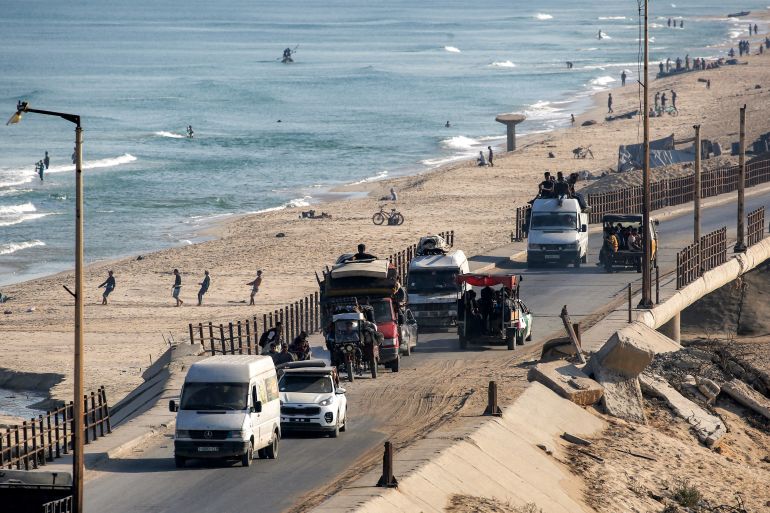
Published On 30 Aug 202530 Aug 2025 Hundreds of Palestinians have fled Gaza City, piling their few remaining possessions onto pick-up trucks and donkey carts as Israel’s deadly bombings and forced displacement campaign intensifies in the area. Families fleeing the Israeli military’s relentless bombardment have begun setting up makeshift tents amid miserable conditions in an area west of central Gaza’s Nuseirat refugee camp, to the south of Gaza City near Deir el-Balah. Most of them have been forced to leave their homes more than once. “We are thrown in the streets, like what would I say? Like dogs? We are not like dogs. Dogs are [treated] better than us,” Mohammed Maarouf, 50, told The Associated Press news agency, standing in front of his tent. Maarouf and his family of nine had already been displaced from the northern Gaza town of Beit Lahiya. “We have no homes. We are on the streets,” he said. Another displaced Palestinian, Mohammed Abu Warda, told Al Jazeera that he had fled Jabalia, also in northern Gaza, and was heading towards the western side of Gaza City. But he said he didn’t know exactly where to go. “We left our area because the situation there was very dangerous,” Abu Warda said. “Hopefully I can find a place to set up a tent … Everything here is useless and everywhere is unsafe. The Israelis attack every single place.” Israeli forces have carried out a sustained bombardment on Gaza City since early August as part of a deepening push to seize the city and displace about one million Palestinians living there. Advertisement On Friday, the Israeli military said it had begun the “initial stages” of its offensive, declaring the largest urban centre in the territory a “combat zone”. The new operation could forcibly displace one million Palestinians to concentration zones in southern Gaza, the UN agency for Palestinian refugees (UNRWA) warned. At least 71 Palestinians were killed in Israeli attacks across Gaza on Saturday, hospital sources told Al Jazeera. Of that, 41 people were killed in Gaza City alone, including at least 11 Palestinians who were killed while queueing for bread from ovens serving communities of displaced people. At least seven Palestinians also were killed in a series of Israeli attacks on a residential apartment block in a densely populated area of the city. Rescuers were seen digging through the rubble to retrieve bodies and try to find any survivors. “The Israeli army has been intensifying its attacks across Gaza City. Homes and community centres have been reduced to rubble, eroding the foundations of civilian life in the area,” Al Jazeera’s Hani Mahmoud reported. “This is happening while people are going through famine, enforced starvation and dehydration. Things are leading to a catastrophic humanitarian crisis.” The head of the International Committee of the Red Cross (ICRC) on Saturday also questioned Israel’s plans for a forced mass expulsion. “It is impossible that a mass evacuation of Gaza City could ever be done in a way that is safe and dignified under the current conditions,” ICRC President Mirjana Spoljaric Egger said in a statement, describing the plan as “not only unfeasible but incomprehensible”. Trucks and vehicles move along the coastal road in the Nuseirat camp in central Gaza [Eyad Baba/AFP] Yet while Israel’s push to seize Gaza City has drawn international condemnation, Prime Minister Benjamin Netanyahu’s government has shown no signs of halting the military offensive. Gideon Levy, a columnist with Israeli news outlet Haaretz, told Al Jazeera that Israel’s overarching plan for Gaza amounts to ethnic cleansing. “The plan is to push all the inhabitants of Gaza out of their houses, then lock them in those concentration camps and then give them two choices, either to live in those camps forever or to leave the Gaza Strip,” Levy said. Describing the Israeli government’s policy as “outrageous”, Levy added that Israel will only halt its offensive if US President Donald Trump decides that “enough is enough” and applies pressure on the country. The US has provided Israel with billions of dollars in military assistance since its war on Gaza began in October 2023. Washington has also shielded its top ally from calls for accountability at the UN and other international arenas. Advertisement In February, Trump suggested removing all Palestinians from Gaza – a plan that would amount to ethnic cleansing, a crime against humanity. Adblock test (Why?)
Bolivian opposition leader Camacho released from jail after nearly 3 years
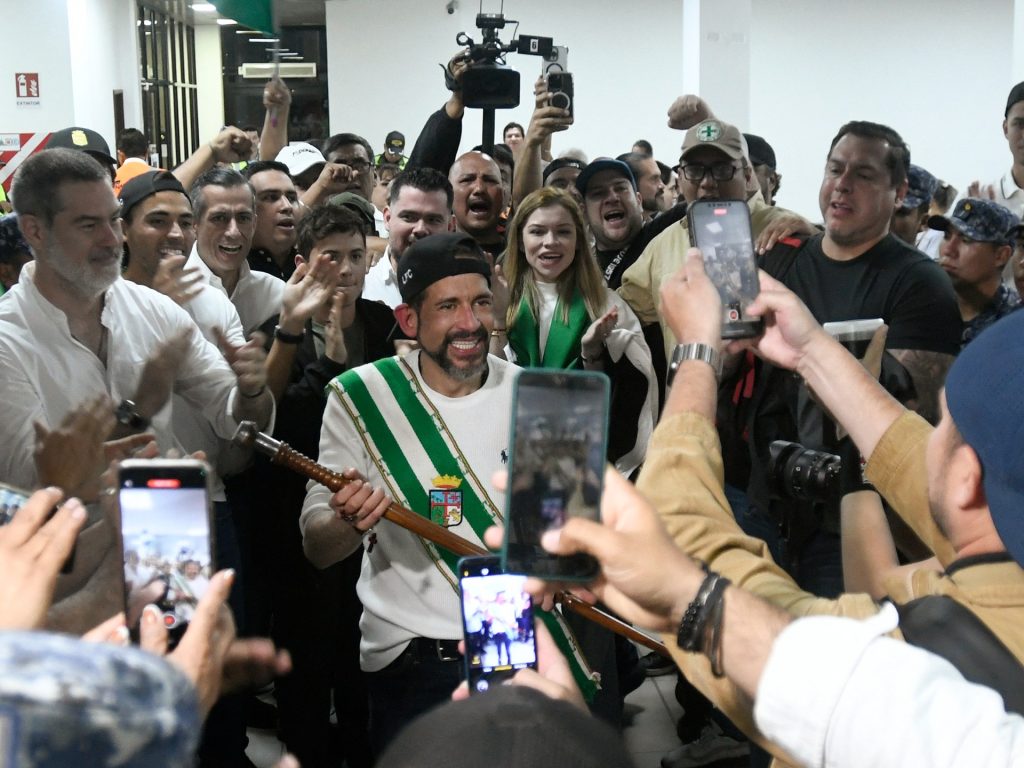
In another victory for the right wing, a criminal case against ex-interim leader Anez has been annulled. Published On 30 Aug 202530 Aug 2025 Right-wing Bolivian opposition leader Luis Fernando Camacho has been released from jail after spending nearly three years in pretrial detention for his role in unrest that led to the 2019 ouster of then left-wing President Evo Morales. As the political right’s momentum accelerates ahead of a presidential election run-off in October, Camacho returned to a hero’s welcome in the eastern province of Santa Cruz after his release on Friday from a maximum-security prison near La Paz. Thousands of supporters waved the city’s green and white flags as he walked down an avenue to the main square, where the governor’s office is located. Camacho addressed supporters who had gathered: “It has been an honour to be imprisoned for almost three years, for the struggle of my people and for democracy.” He then entered the governor’s office to take over from deputy governor Mario Aguilera, who had been in charge of the department in his absence. Camacho’s release comes after Bolivia‘s Supreme Court last week issued a rare ruling ordering all judges to review the legality of pretrial detention in the cases of three prominent right-wing leaders, including Camacho. The 46-year-old conservative lawyer and businessman was arrested in December 2022 on charges of fomenting a coup in 2019 against Morales, the country’s first Indigenous president, who had governed since 2006. The arrest sparked countrywide protests, with many Bolivians dismissing the alleged coup as fictitious. Morales stepped down after losing the support of the military amid strikes and protests in response to his disputed election to a fourth term. Advertisement Camacho led violent protests over Morales’s re-election claim. His imprisonment has been a rallying cause for the Bolivian right, which is poised to win back the presidency after two decades, in October’s run-off. Camacho has been placed under house arrest while the investigation into him continues, but his lawyers said that did not prevent him from working. In addition to the ongoing investigation over the alleged coup, which was spearheaded by the outgoing socialists, Camacho also has three other pending cases – for instigating a strike, alleged public procurement irregularities, and alleged irregular staffing appointments in the governor’s office. Meanwhile, Bolivia’s highest court late on Friday threw out criminal charges against former interim President Jeanine Anez over her role in the 2019 killings of protesters, ordering the flashpoint case to restart in a special process for alleged crimes committed by former heads of state. The contentious decision marked a legal victory for the opposition leader, who has spent almost four and a half years in prison on different charges related to the 2019 ouster of Morales, following his disputed reelection. The sudden developments come just weeks after Bolivia’s general election boosted the opposition for the first time in decades, raising concerns among critics who see a justice system subject to political manipulation. The run-off presidential election in October pits a centrist pro-business senator against a right-wing former president. Adblock test (Why?)
Russia attacks Ukraine’s Zaporizhia; Kyiv hits Russian oil refineries
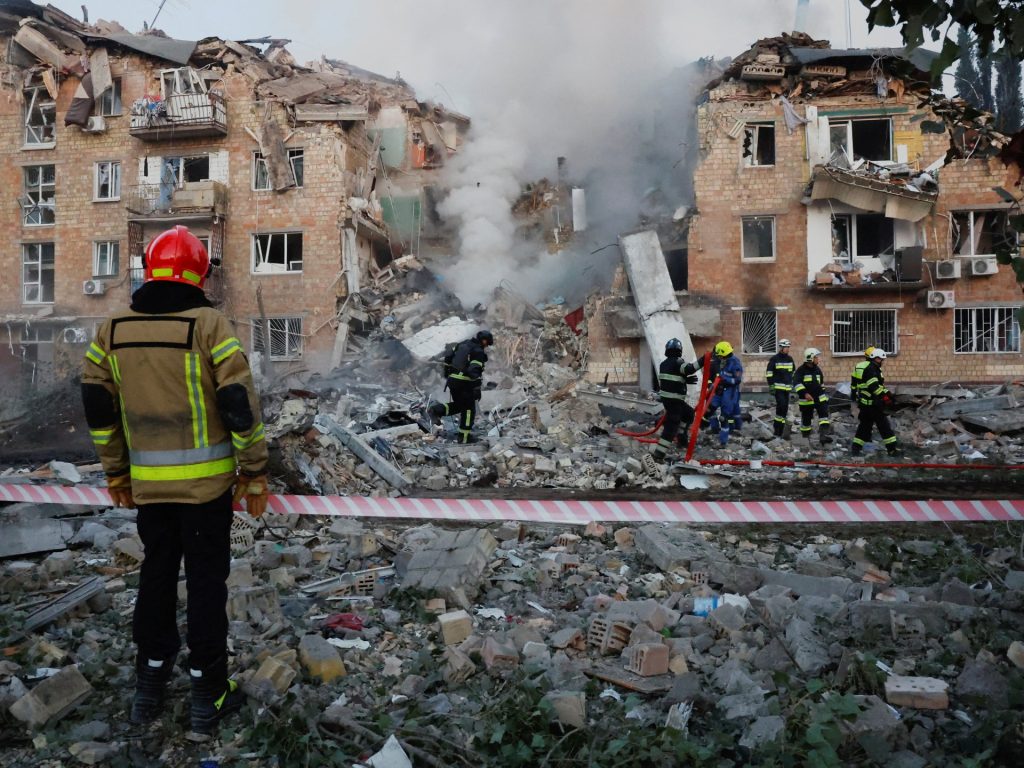
At least one person has been killed and 24 wounded, including two children, in attack that targeted Zaporizhia. Published On 30 Aug 202530 Aug 2025 A “massive” overnight Russian attack on central and southeastern Ukraine has killed at least one person, with homes and businesses damaged in multiple cities, authorities have said, while Kyiv has struck two Russian oil refineries. “At night, the enemy carried out massive strikes” on Zaporizhia, Ukraine’s state emergency service said on Telegram on Saturday. At least one person was killed and 24 others were wounded, including two children, according to regional military administration chief Ivan Fedorov. “Russian strikes destroyed private houses, damaged many facilities, including cafes, service stations and industrial enterprises,” Fedorov said. Ukraine’s central Dnipropetrovsk region also came under attack early on Saturday, the governor said, reporting strikes in Dnipro and Pavlohrad. “The region is under a massive attack. Explosions are being heard,” Serhiy Lysak wrote on Telegram, warning residents to take cover. Since Russia launched its full-scale invasion of Ukraine in February 2022, Dnipropetrovsk had been largely spared from intense fighting. But Kyiv acknowledged on Tuesday that Russian troops had entered the region, after Moscow claimed it had gained a foothold there. Dnipropetrovsk is not one of the five Ukrainian regions – Donetsk, Kherson, Luhansk, Zaporizhia and Crimea – that Moscow has publicly claimed as Russian territory. The Ukrainian air force said it struck down 510 of 537 drones and 38 of 45 missiles launched by Russia in its overnight attack, adding that it recorded five missile and 24 drone hits at seven locations. Advertisement In the meantime, the Ukrainian military said that it struck Russian oil refineries overnight. The military said it recorded multiple explosions and a fire at the Krasnodar oil refinery. There was also a fire in the Syzran oil refinery area in the Samara region. Kyiv reeling from deadly attack The new Russian attacks come two days after a huge Russian drone and missile attack rocked Kyiv and its residents, one of the worst on the capital in the war now in its fourth year, which authorities said killed up to 25 people. Authorities said 22 of those killed, including four children, had been residents of an apartment building destroyed in the city’s eastern Darnytskyi district. President Volodymyr Zelenskyy on Thursday said the strike, which damaged the offices of the European Union and British Council, was the second-largest attack since Russia launched its invasion of Ukraine. On Saturday, Zelenskyy said that Moscow had used preparation time for a summit of leaders to launch new massive attacks on his country. “The only way to reopen a window of opportunity for diplomacy is through tough measures against all those bankrolling the Russian army and effective sanctions against Moscow itself – banking and energy sanctions,” he wrote on X. Meanwhile, European Union foreign policy chief Kaja Kallas said on Saturday that it was not possible to imagine giving back Russian assets frozen inside the bloc due to the war unless Moscow had paid reparations. “We can’t possibly imagine that … if … there is a ceasefire or peace deal that these assets are given back to Russia if they haven’t paid for the reparations,” she told reporters before a meeting of EU foreign ministers in Copenhagen. Zelenskyy has urged allies to swiftly elevate talks on security guarantees for Ukraine to the level of leaders, as EU defence ministers meeting Friday in the Danish capital pledged to train Kyiv’s troops on Ukrainian soil in the event of a truce. The Ukrainian president said he expected to continue talks with European leaders next week on “NATO-like” commitments to protect Ukraine, adding that United States President Donald Trump should also be involved. Adblock test (Why?)

